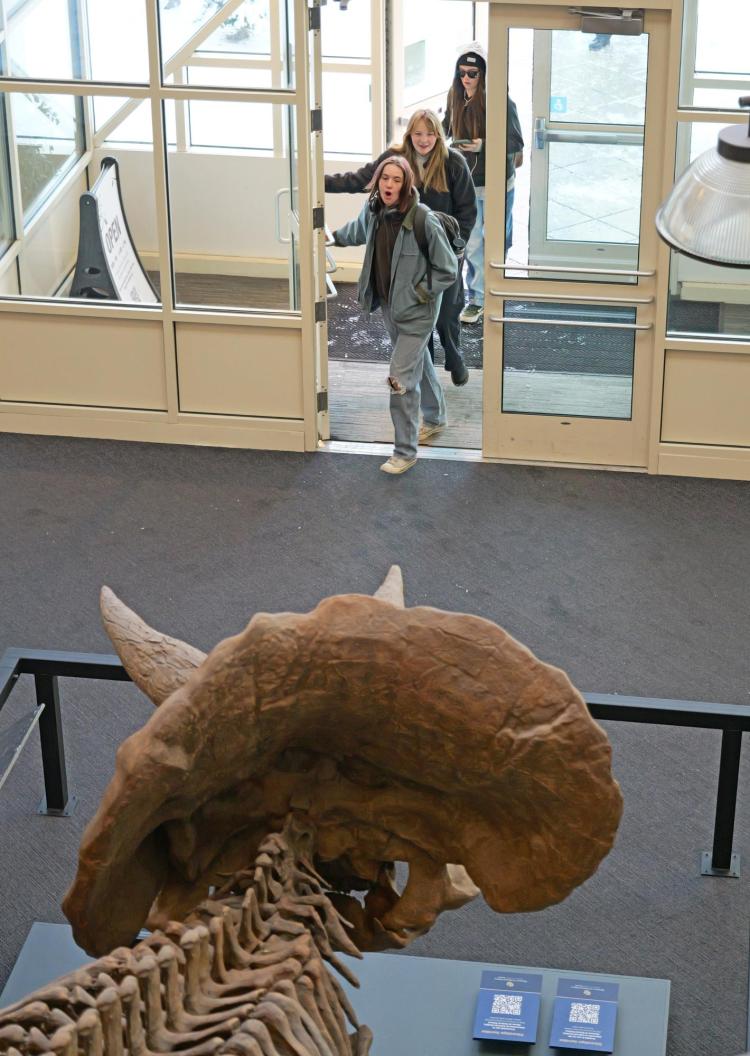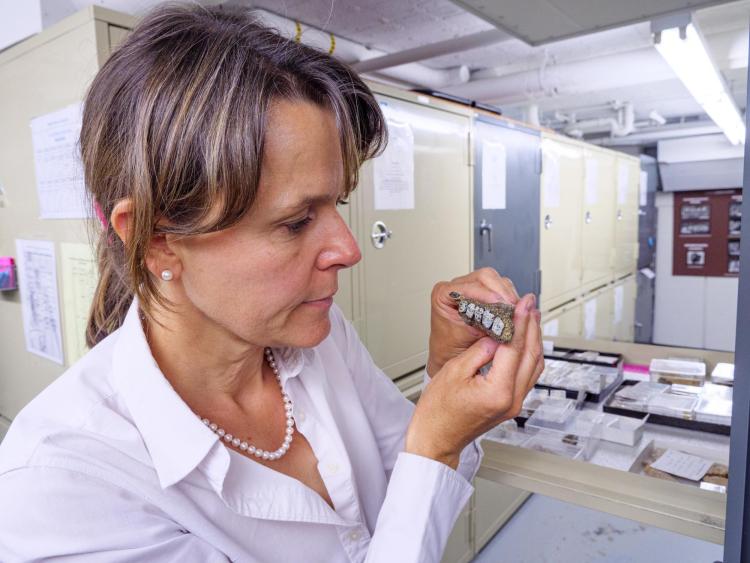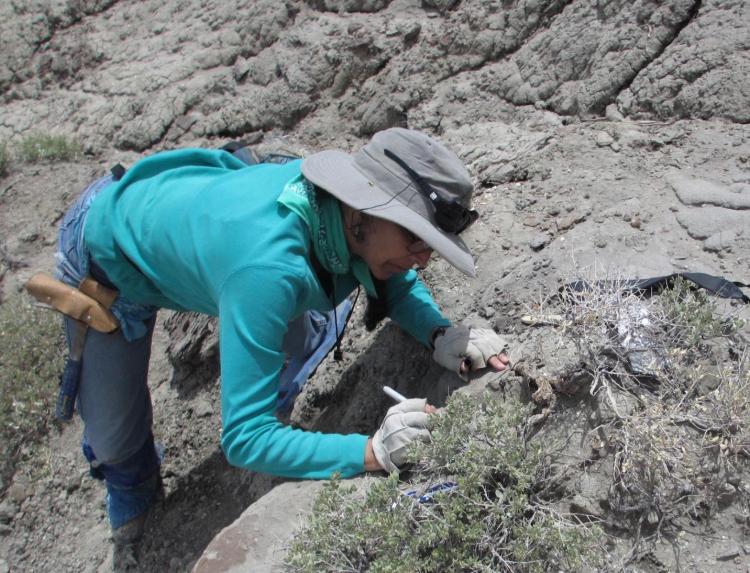This January, a new, full-scale skeleton of a Triceratops dinosaur came to campus, shining a light on Colorado's ancient past-a time when creatures like this three-horned dinosaur tromped through landscapes with palm trees, and flying reptiles with 20-foot wingspans called pterosaurs soared through the sky.
The skeleton, which was cast from real Triceratops fossils collected in Wyoming in the late 1800s, is made from plaster, fiberglass and foam. It measures almost 22 feet long and 9 feet tall.
For close to a century, scientists at the CU Museum of Natural History have helped to reveal the state's prehistory. Today, the museum holds more than 100,000 vertebrate paleontology specimens in its collections, including ancient rhinoceros skulls, fossilized dinosaur poop and likely Triceratops tracks.
To welcome the new arrival, CU Boulder paleontologists Jaelyn Eberle and Karen Chin answer some questions about the iconic Triceratops, and the alien landscape they called home.
What were Triceratops?
Triceratops, which translates to "three-horned face," is the name for not one but two species of dinosaurs: Triceratops prorsus and the more common Triceratops horridus.
Triceratops could stretch to nearly 30 feet long and weighed 6 to 8 tons. These plant-eating animals dwelled in western North America from Canada south into Colorado between about 68 to 66 million years ago at the end of what geologists call the Cretaceous Period. Scientists hypothesize that they went extinct along with all other non-avian dinosaurs after an asteroid crashed into the planet off the coast of Mexico.
"They probably witnessed that catastrophic event-and suffered for it," said Jaelyn Eberle, curator of fossil vertebrates at the CU Museum of Natural History and professor in the Department of Geological Sciences.
What did Triceratops eat?
Eberle has studied mammals that lived both before and after that fateful collision and explained that paleontologists can learn a lot about extinct animals from studying their teeth and jaws.
The herbivorous Triceratops, for example, had a bird-like beak, which the animals may have used to snip off pieces of vegetation from the ground or higher up. They also boasted rows of hundreds of teeth that grew tightly together to form a "dental battery."
"The teeth operated as a single sheering surface," Eberle said. "That's a really efficient way of consuming a lot of plant material, which is something that a 20-foot-long dinosaur needed to do."

People react to the newly installed plaster cast of a life-size Triceratops in the lobby of the SEEC building at CU Boulder. (Credit: Casey A. Cass/CU Boulder)
What were those horns for?
Chin, a professor in the Department of Geological Sciences and curator of paleontology in the CU museum, studies coprolites, or fossilized animal poop. She's also collaborating with paleontologists from Australia to study a Triceratops fossil from North America.
People often assume that Triceratops used their three horns to fend off fearsome predators like Tyrannosaurus rex, she said. But it's more likely that Triceratops may have wielded their horns for something else-think of bull elk fighting over potential mates during the fall rut.
"Their horns were more likely used for males fighting members of their own species," Chin said. "But like elk, they'd probably use their horns to gore a predator to fight back."
What did Colorado look like during the age of Triceratops?
Colorado in the Late Cretaceous Period was warmer and more humid than it is today. At the time, palms grew alongside other flowering plants and ferns.
Turtles and crocodiles flourished in this balmy environment. They joined larger reptiles, including hadrosaurs, or duck-billed dinosaurs, and ankylosaurs, which were armored and had club-shaped tails. Mammals occurred too, but you may never have seen them. They were mostly small, usually the size of mice or rats, and were probably nocturnal.
And while Colorado might be land-locked today, in the Late Cretaceous, a salty body of water called the Western Interior Seaway covered a huge portion of North America, including most of Kansas.
"Dinosaurs living in eastern Colorado may have had beachfront property," Eberle said.
How did Triceratops become so iconic?
Chin noted that Triceratops remains one of the world's most famous prehistoric creatures today. (They are her 2-year-old grand niece's favorite dinosaur). In part, Chin said, that may be because scientists described the genus in the late 1800s when dinosaurs were first rising into the public's consciousness.
But Triceratops are also iconic for another reason: They're just weird.
"You have this great big skull with three big horns, and then you put a beak on it, too," Chin said. "It's so bizarre."
Chin added that Colorado has long been an ideal place to study animals that don't look like anything alive today. The state's dry climate exposes dramatic rock formations, opening a time machine to the age of Triceratops and beyond.
"We have dry grasslands with sparse plant cover that doesn't hide fossils. And we have badlands where there is a lot of erosion that exposes new fossils," Chin said. "With these conditions it's a wonderful place to find fossils."
She and Eberle hope that CU Boulder's Triceratops could inspire the next generation of paleontologists to study all new and equally amazing prehistoric creatures.








